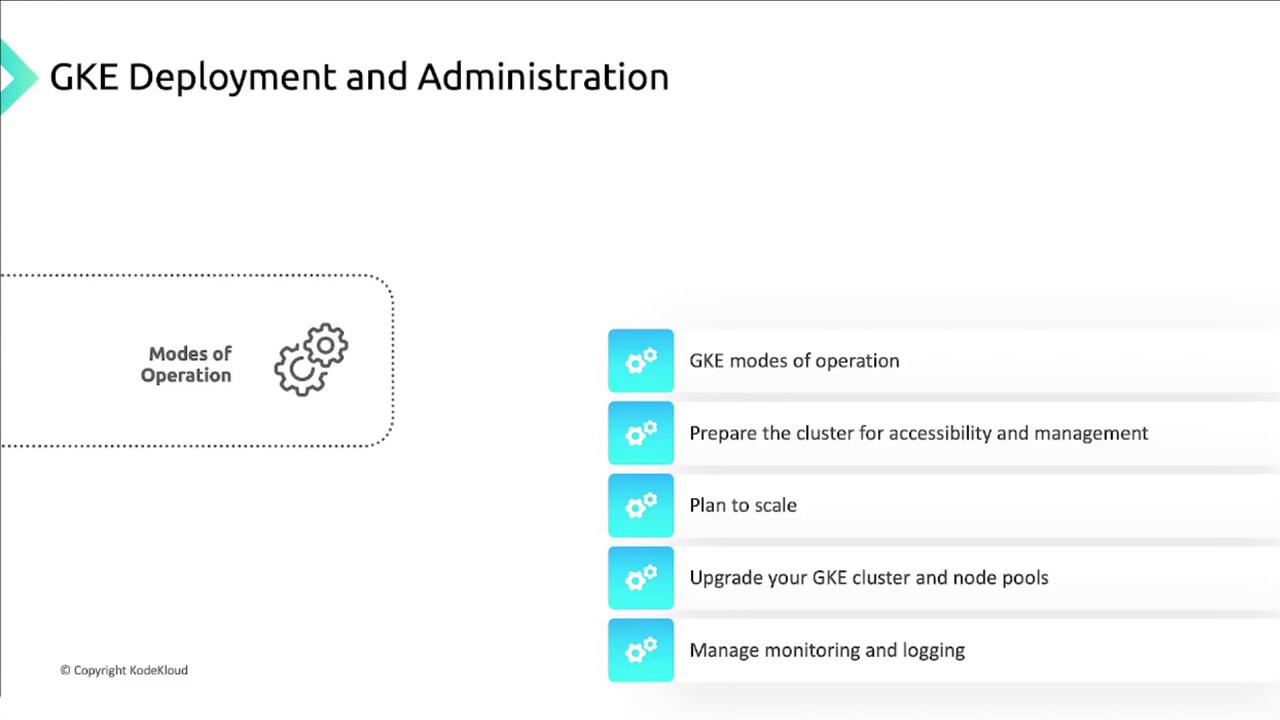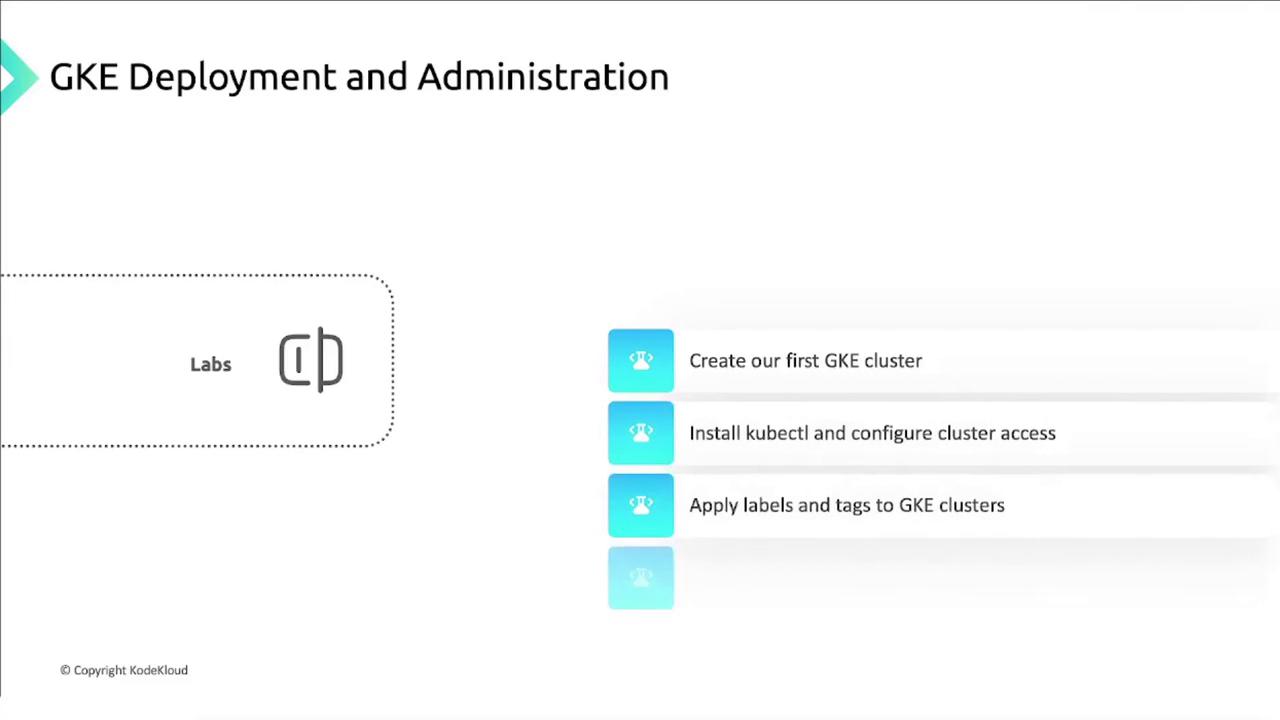GKE - Google Kubernetes Engine
GKE Deployment and Administration
Section Introduction
Welcome to this comprehensive guide on deploying and managing Google Kubernetes Engine (GKE). Whether you’re new to Kubernetes or looking to optimize your existing clusters, this lesson covers:
- GKE cluster modes of operation
- Cluster accessibility and management
- Scaling and upgrading strategies
- Monitoring and logging with Cloud Operations
We’ll also walk through hands-on lab activities so you can apply these concepts in real time.

What You’ll Learn
| Topic | Description |
|---|---|
| GKE Modes of Operation | Compare Autopilot, Standard, and private clusters |
| Cluster Preparation | Configure networking, IAM, and security |
| Scaling & Upgrades | Implement cluster autoscaling, node auto-provisioning, and version upgrades |
| Monitoring & Logging | Leverage Cloud Operations to monitor, alert, and visualize cluster performance |
| Hands-On Labs | Create clusters, install kubectl, and apply labels/tags |
Note
GKE combines Google’s infrastructure with open-source Kubernetes, enabling you to focus on applications rather than managing control planes.
Learn more in the GKE Documentation.
Detailed Topics
GKE Cluster Modes of Operation
Explore the differences between Standard, Autopilot, and Private clusters, and determine which mode aligns with your organizational needs.Preparing Your Cluster
- Configure networking (VPC, firewall rules)
- Set up IAM roles and policies
- Enable private endpoint and master authorized networks
Scaling and Upgrading
- Cluster Autoscaling
- Node Auto-Provisioning
- Rolling and surge upgrades for both clusters and node pools
Monitoring and Logging
Integrate with the Cloud Operations suite to track metrics, set alerts, and visualize logs.

Hands-On Lab Exercises
- Create a GKE Cluster
gcloud container clusters create my-gke-cluster \ --zone us-central1-c \ --machine-type n1-standard-1 - Install kubectl
gcloud components install kubectl - Apply Labels and Tags
kubectl label nodes <NODE_NAME> environment=production gcloud compute instances add-tags <INSTANCE_NAME> --tags=k8s-node
By the end of this lesson, you’ll have a well-architected GKE environment and the skills to maintain it at scale. Let’s get started!
Watch Video
Watch video content